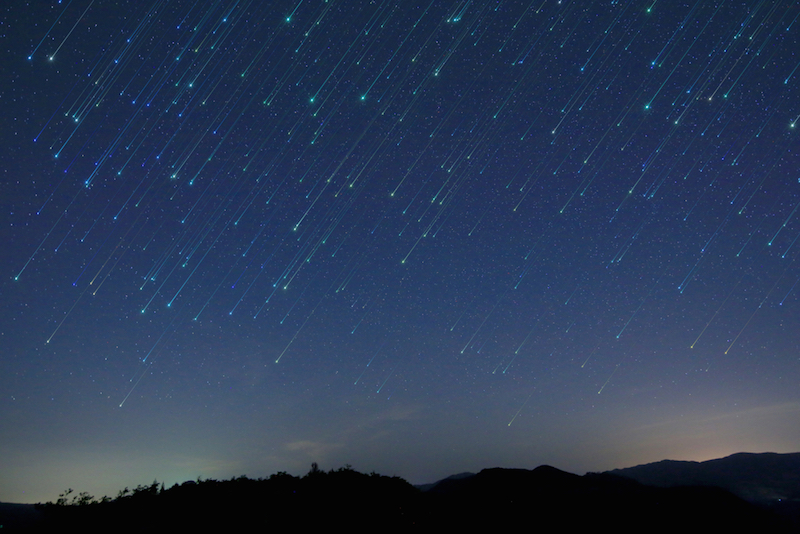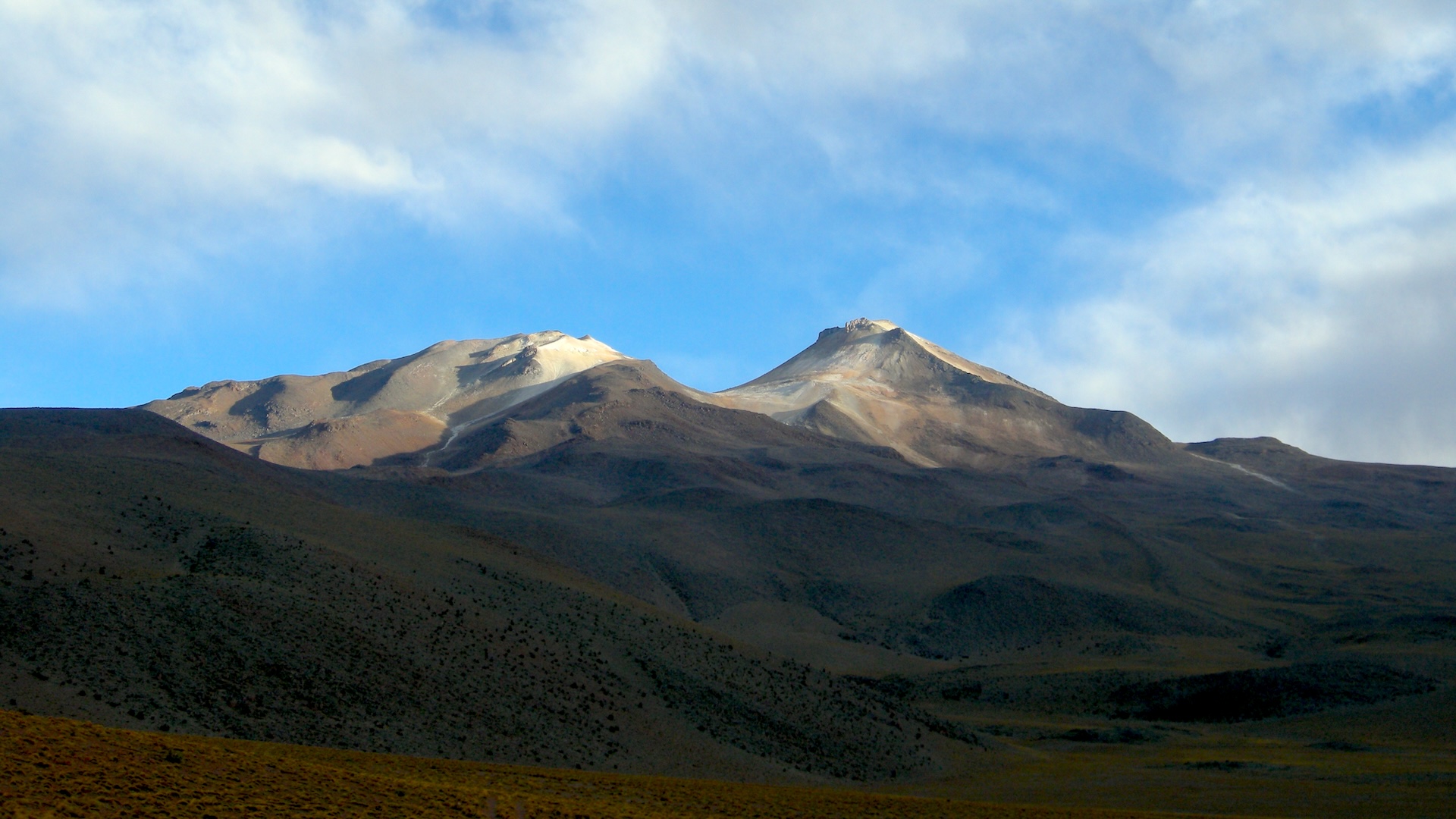
Rainbow-Colored Shooting Stars May Fly Overhead Someday

Someday, stargazers may see pink, green and violet shooting stars streak across the night sky, thanks to a startup company that wants to launch tiny, human-made meteors, according to news sources.
The Japanese company ALE plans to create and release artificial meteors into space that emit colorful trails when they burn up in Earth's atmosphere. For instance, a meteor made of copper would burn green; a barium one would burn blue; and potassium, rubidium and cesium meteors would burn various shades of purple.
"As one learns in high school science classes, when a substance burns, the flame emits a specific color; this is called the flame reaction," ALE said on its website. "By loading our satellite with various materials, we are able to turn our shooting stars into any color." [Space-y Tales: The 5 Strangest Meteorites]
Normally, shooting stars form when particles in space — usually much smaller than an inch (just a few millimeters long) enter the atmosphere and burn brightly, in a process known as plasma emission. ALE researchers want to recreate that process, but with human-made particles, they said.
The company plans to launch a satellite carrying about 500 to 1,000 "source particles," which will become the artificial meteors. Once the satellite stabilizes in orbit, operators on the ground can command it to discharge the particles to create the colorful shooting stars.
"The particles will travel about one-third of the way around the Earth and enter the atmosphere," ALE researchers said. "[They] will then begin plasma emission and become shooting star[s]" at an altitude of about 37 miles to 50 miles [60 to 80 kilometers] aboveground.
The mission, dubbed "Sky Canvas Project," will emit dozens, if not hundreds, of particles, showering Earth with rainbow-colored meteor showers, the company said.
Sign up for the Live Science daily newsletter now
Get the world’s most fascinating discoveries delivered straight to your inbox.
Though small, the particles will burn brightly, according to ALE scientists. Sirius, the brightest star in the night sky, has an apparent magnitude of minus 1.5. (The lower the apparent magnitude, the brighter the glow.) The artificial shooting stars have an apparent magnitude of about minus 1, at least in a laboratory setting, the researchers said. This means they'll be visible down on Earth, even in a city, where lights often drown out celestial objects, ALE said. [Fallen Stars: A Gallery of Famous Meteorites]
Space junk
If launched, ALE's satellite would join countless other spacecraft orbiting Earth. However, the company says it will follow international regulations and ensure that its satellite doesn't stay aloft and become space junk, by purposefully crashing it into the atmosphere within 25 years.
"In this case, the used satellite itself will become a very large shooting star," ALE said.
Moreover, the company is taking precautions so that its meteor-emitting satellite won't crash into other satellites. The team created software based on the United States' Joint Space Operations Center (JSpOC), which tracks satellites and debris in space. ALE will calculate where other objects are located in space, and prevent the ALE satellite from colliding with them, the company said.
But Moriba Jah, a space-junk expert and the director of the University of Arizona's Space Object Behavioral Sciences program, isn't sure that method will work.
JSpOC's site, space-track.org, largely tracks objects' general movements, but not their precise locations, which makes him "a bit uncomfortable" and unsure if ALE's satellite can effectively stay out of trouble, Jah told National Geographic.
Still, ALE plans to launch its first satellite in the second half of 2017 and service it in 2018, the researchers said. The company plans to launch a new satellite every year after that, and it hopes the project will reveal more about the science of meteors. [Photos: New Kind of Meteorite Found in Sweden]
But it won't be cheap. Each particle is slated to cost about 1 million yen (about $9,620) to produce, and that doesn't include the costs for the satellite or the launch, National Geographic reported.
What's more, ALE dispelled rumors last week that it might stage an artificial meteor shower for the 2020 Olympic Games in Tokyo.
"While we do intend on providing our shooting stars, once complete, to large-scale events — and we also have mentioned the Olympic Games as an event that we would love to work with (*hint*) in interviews — we have not made an official proposal to the Tokyo Organising Committee of the Olympic and Paralympic Games and hence do not have any facts or developments to disclose at the moment," the company said in a statement.
Original article on Live Science.

Laura is the archaeology and Life's Little Mysteries editor at Live Science. She also reports on general science, including paleontology. Her work has appeared in The New York Times, Scholastic, Popular Science and Spectrum, a site on autism research. She has won multiple awards from the Society of Professional Journalists and the Washington Newspaper Publishers Association for her reporting at a weekly newspaper near Seattle. Laura holds a bachelor's degree in English literature and psychology from Washington University in St. Louis and a master's degree in science writing from NYU.









